The death of Airbnb and why design hotels are my favorite way to travel
Align your accommodation to your values
When Airbnb first became popular a few years after it was founded in 2008, I was delighted. My favorite stays were rooms in host’s homes, like this gorgeous bedroom full of antiques in Maine, where our host Anne made me fresh blueberry muffins in her chef’s kitchen in 2014. Or this host in Newburyport, MA, who had her garden certified as a butterfly habitat. I usually stayed in homes owned by artists or chefs, and I got to experience the magic they put into their homes.
Sixteen years later, I rarely use Airbnb. What was once an opportunity to truly connect with a local has become another form of airspace: apartments that look the same regardless of whether you are in Sydney, Tokyo, or Paris. Not to mention, the fees are exorbitant, adding hundreds of dollars to the total cost. Most places will not allow you to leave your luggage after check-out, perhaps the most annoying aspect of Airbnb. Finally, Airbnb is doing significant harm to communities across the world by driving up the cost of housing for residents.
These days, I like to spend between $100-$150 per night maximum on accommodation to meet our budget. I also like to align my accommodation with my personal values of adventure, connection, and richness. When I’m traveling, this means visiting a place with a connection with nature, connecting with locals, and experiencing a high-quality lifestyle. Balancing my budget and my values is tricky! Sometimes, I stay at places that are clean and safe, but not in alignment. Little things like poor-quality soap and shampoo, obtrusive coffee stations (I have to confess, in most hotels, I put the coffee machine into the closet next to the safe), and nowhere to put your luggage distract me from the experience.
I realized how important design was to me after watching the Netflix show “Abstract: the Art of Design”. For some people, having a clean place to stay is enough. In my opinion, every object should fulfill a function for the user. I am staying in a hotel in part for the same reason I go to a restaurant: to use beautiful ceramics, take selfies in gorgeous bathroom mirrors, and to try different foods. When I see a well-designed hotel, I am inspired by how design can change your experience.
One of my favorite stays in Italy was at Agriturismo Collerisana in Umbria. We woke up in the morning and slowly ambled to the breakfast room where the fire was roaring on the pellet stove. Our host cooked us an amazing breakfast with fresh products from the farm, including bread sprinkled with “liquid gold” fresh olive oil from the recent harvest. The bathroom had beautiful fixtures true to the historic quality of the property, and the bedroom was perfectly designed for a weekend stay. Chocolate was left on our pillows along with a robe and slippers, there was a gorgeous antique armoire to hang our winter clothes, and our patio looked out onto an olive grove. Not a single detail was out of place - all for 120 euros per night.
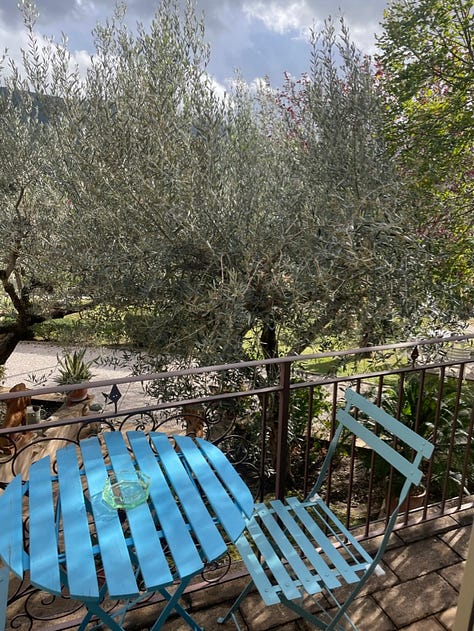
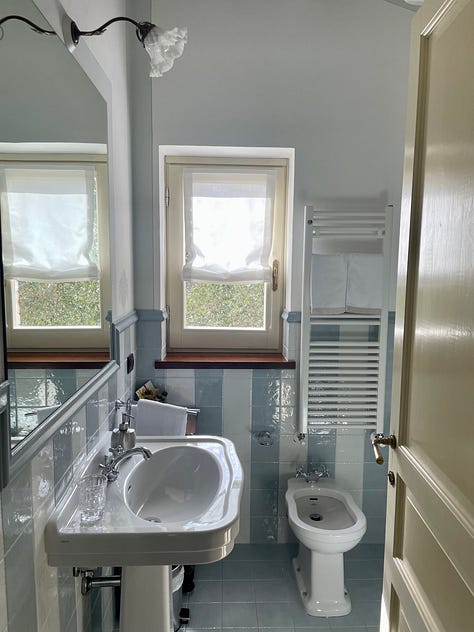
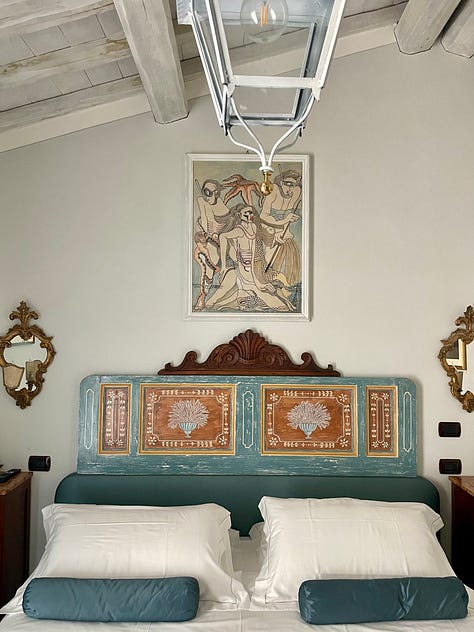
Another recent favorite was Nomad Hotel in Basel, Switzerland. I loved the high-quality linen bedding, the beautifully tiled shower, and the pop of color in the hand towels. However, they made the experience unforgettable by including great art magazines, an instant camera to borrow while you walk around the city, and a wickelfisch to borrow so you could float down the Rhine river with the locals. Perhaps the best design was that they had high-quality coffee and teas as well as a tap for mineral or fizzy water and a bowl of fruit to snack on - in the hallway. They also had a common area library and co-working space, which would have been so convenient when I was a remote worker. Not to mention, we got a Basel card with our stay, which gave us free transportation and half-priced access to all museums in Basel (this came in very handy in expensive Switzerland). We paid 145 euro per night.
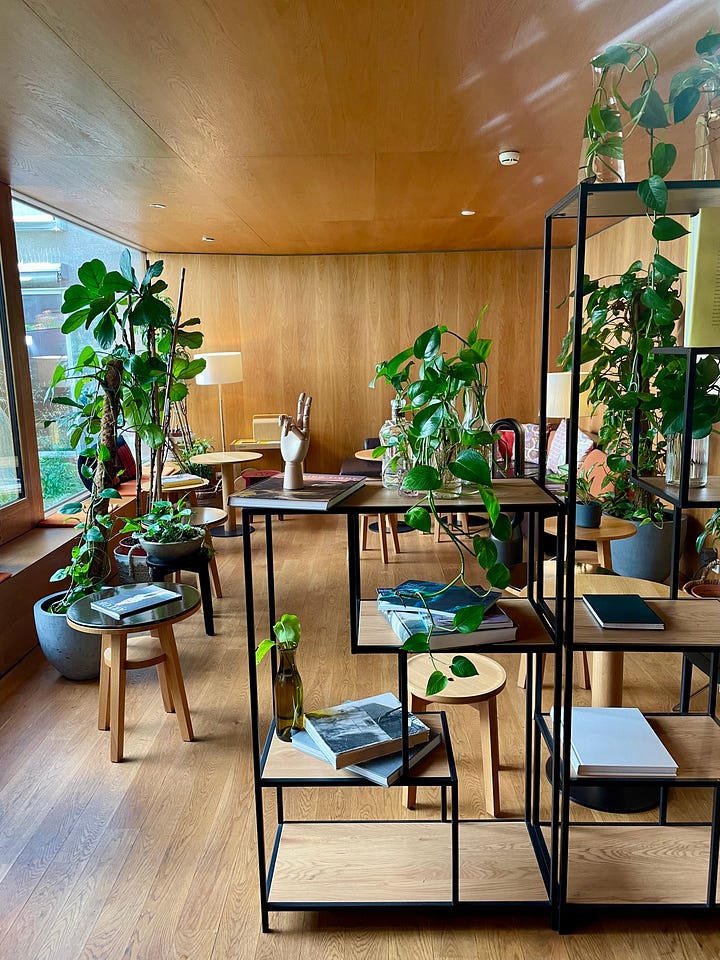

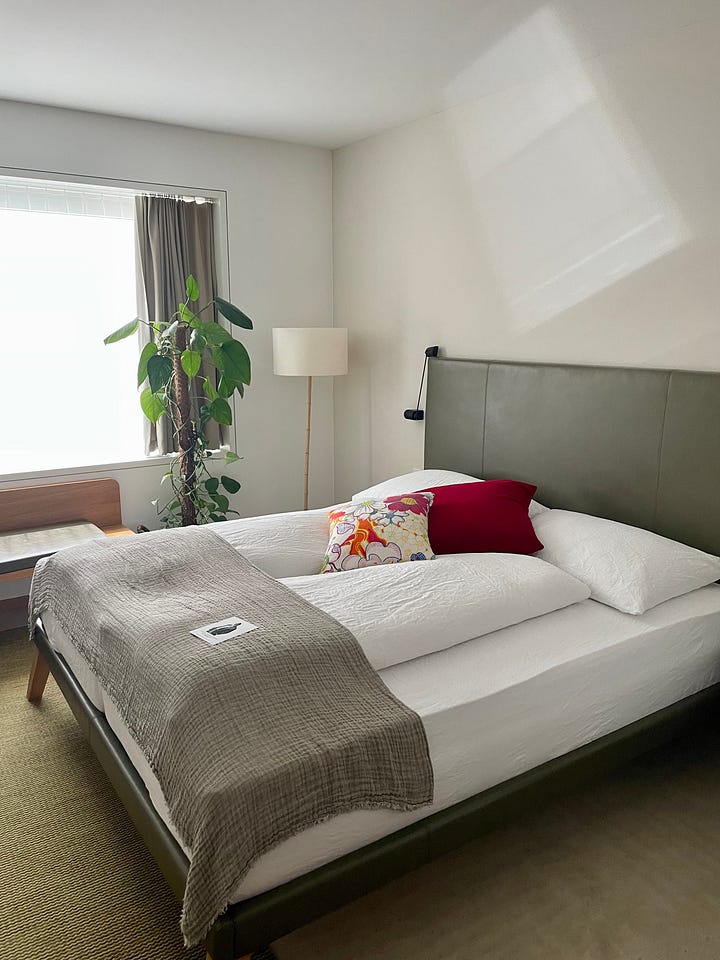

These hotels stick out in my mind not only for curating amazing experiences but also inspiring me to live differently. In Munich, we stayed at a gorgeous independent hotel called Unsoelds, where we got to rent bikes for free (included in our stay at 120 euros per night). It was fun to blend in with the crowds on their commute home from work as we pedaled across the city.
In the alps of Slovenia, we stayed in a glamping tent with views of the mountains. The outdoor communal showers had wood walls and stone floors, and you could hear kids laughing and singing while you were taking a shower, all for 145 euros per night. There was even a communal kitchen cabin to play games and cook dinner with friends.
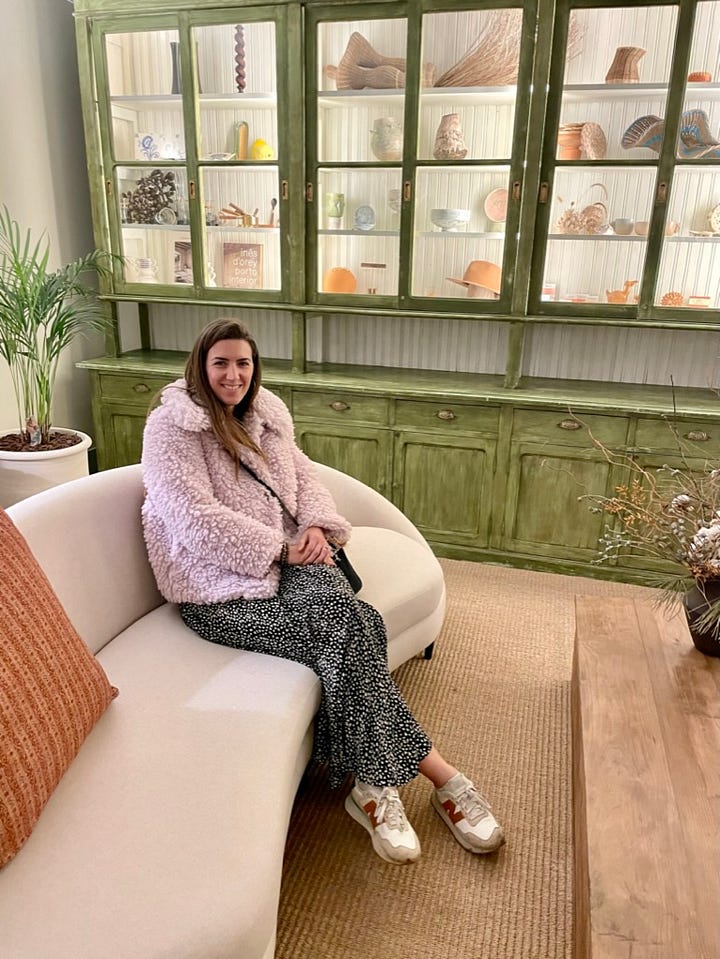
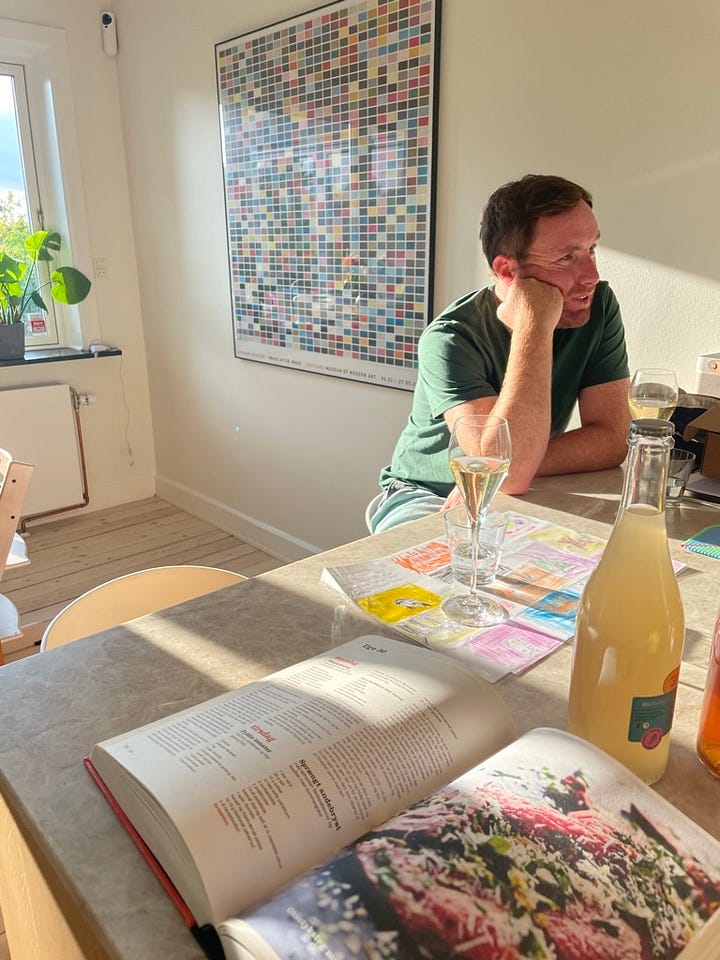
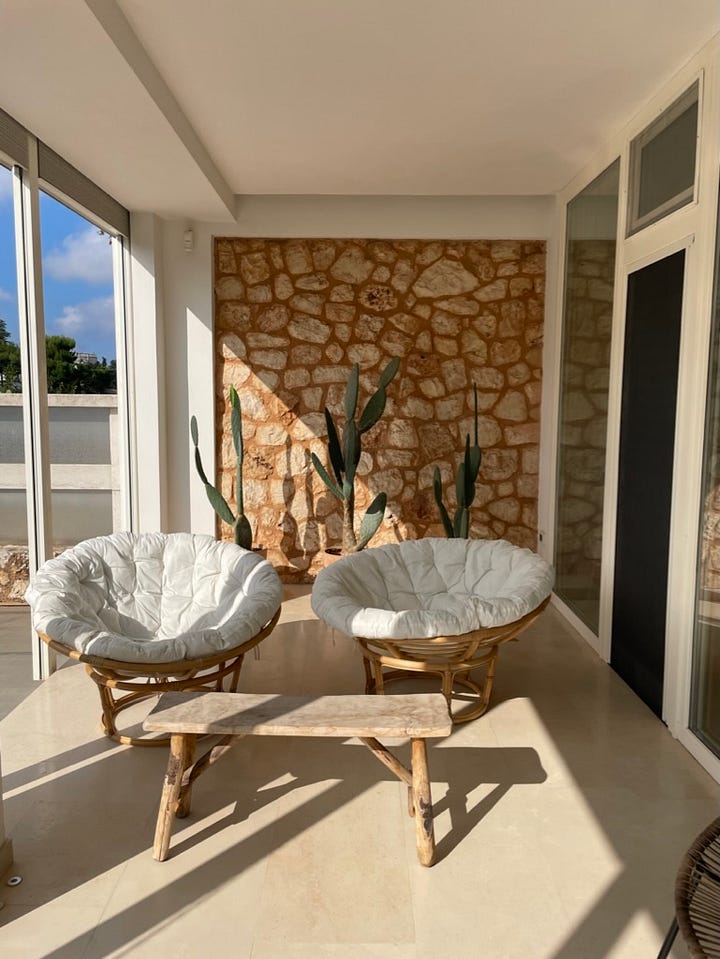
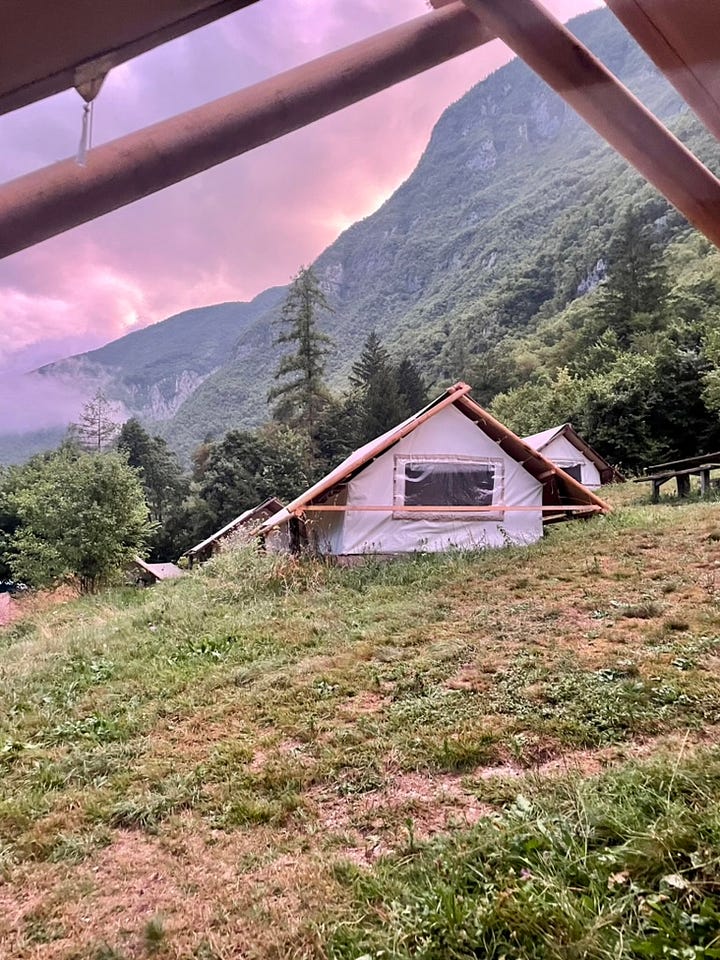
These ways of living make me think: how do I want to live? In a fancy house with a walk-in tiled shower? An outdoor shower under the mountain tops? In a home in a city with bike parking downstairs? Am I surrounded by fruit trees in the countryside? I get a taste of what it’s like to live differently and a smoother transition into my surrounding environment. A life focused on creativity, design, movement, and integration with nature is what I am seeking.
The challenge in finding accommodation that matches these values is that most design hotels tend towards luxury - and I am not interested in luxury hotels. They are not only expensive, they are also stuffy and impersonal. When I’m on a trip I want to relax, not feel out of place. It’s difficult to find the sweet spot of great design and simple, quality living. Here are some tips on how I find great hotels:
I use Hotels.com to make reservations. They normally include boutique and design hotels, and it doesn’t require allegiance to the big brands (Mariott, Hyatt, etc.) Plus, your 10th night is free.
Agriturismos: In Italy, this can be a great way to find a quality stay for a good price. Just check the reviews, and make sure there is AC in the warmer months.
Word of mouth: both the hotels in Portugal and Umbria were recommendations from friends with great taste.
Googling “boutique hotel in [city name]”.
Social media: even though I only use Instagram on my laptop, I type the name of the place I’m going to see who’s posting about it. That’s how I found the glamping spot in Slovenia!
What do you think? What is important to you while traveling? How do you find great design hotels? Please let me know!
In my opinion, Airbnb is still useful for two reasons: 1) Group travel and 2) Experiences. For group travel, it’s nice to be together and have common areas to catch up after sightseeing. We stayed with my in-laws at this beautiful villa in Puglia, and I loved staying with my family on a trip to Ventura to see my cousins. The bathrooms and the front porch! I also like the Airbnb experiences option. I have booked an awesome lunch in Amalfi (although prices have gone up!) and tour of the Chagall Museum in Nice through the experiences.
Read more about airspace, or how Silicon Valley influenced global design, in this article here.





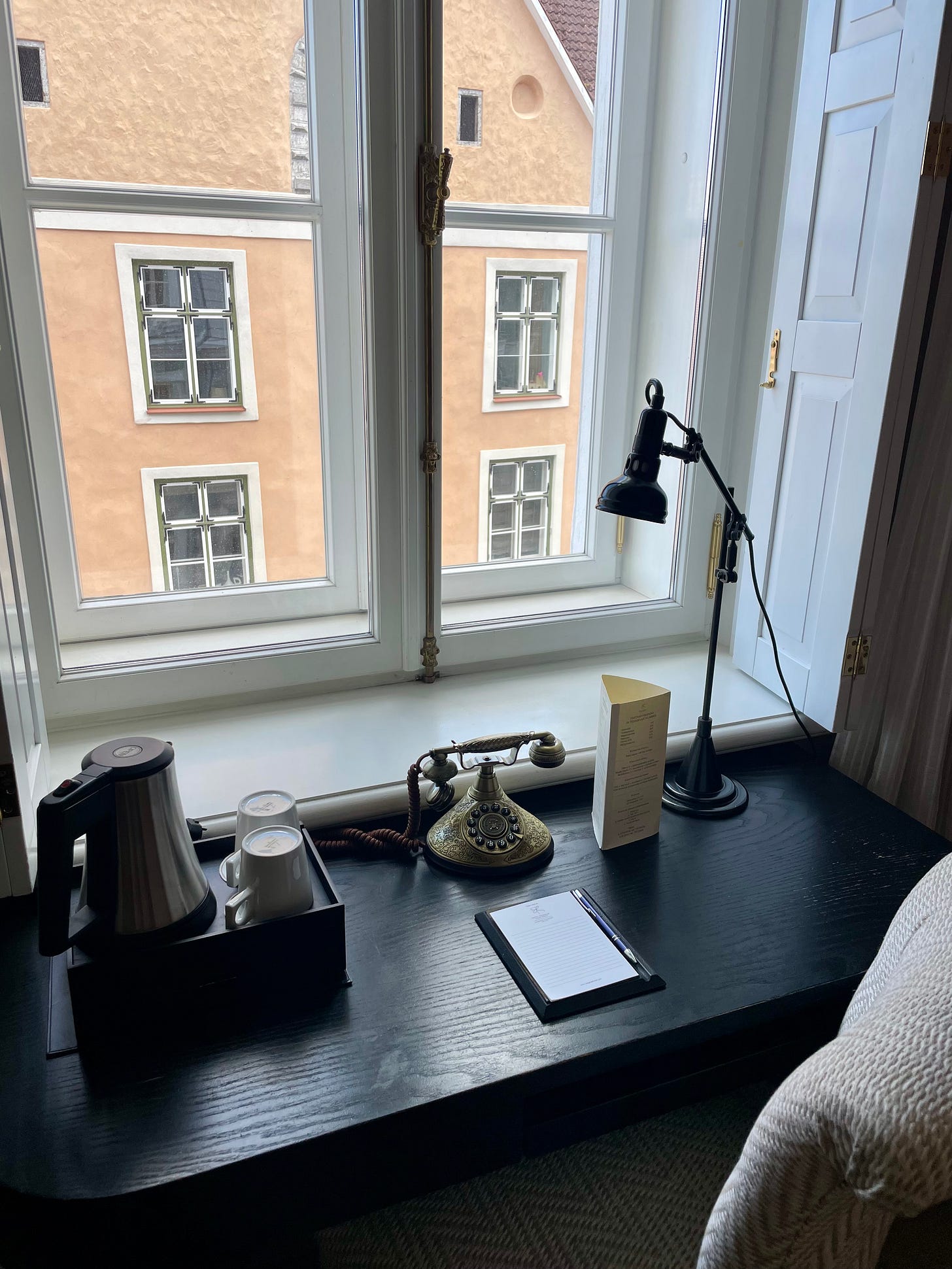

I search on all platforms but look for true hosts, and there are still a lot of those around.
I love hearing what details makes a space special - I'm taking notes for when I open my house to creatives and women travelling solo next year!